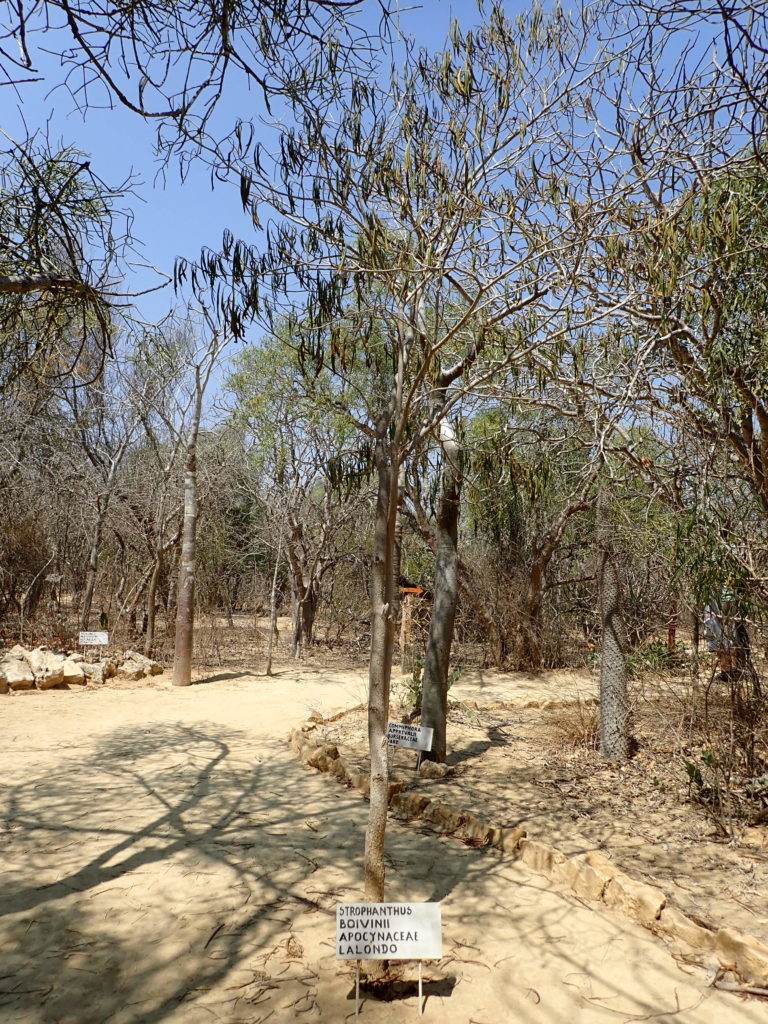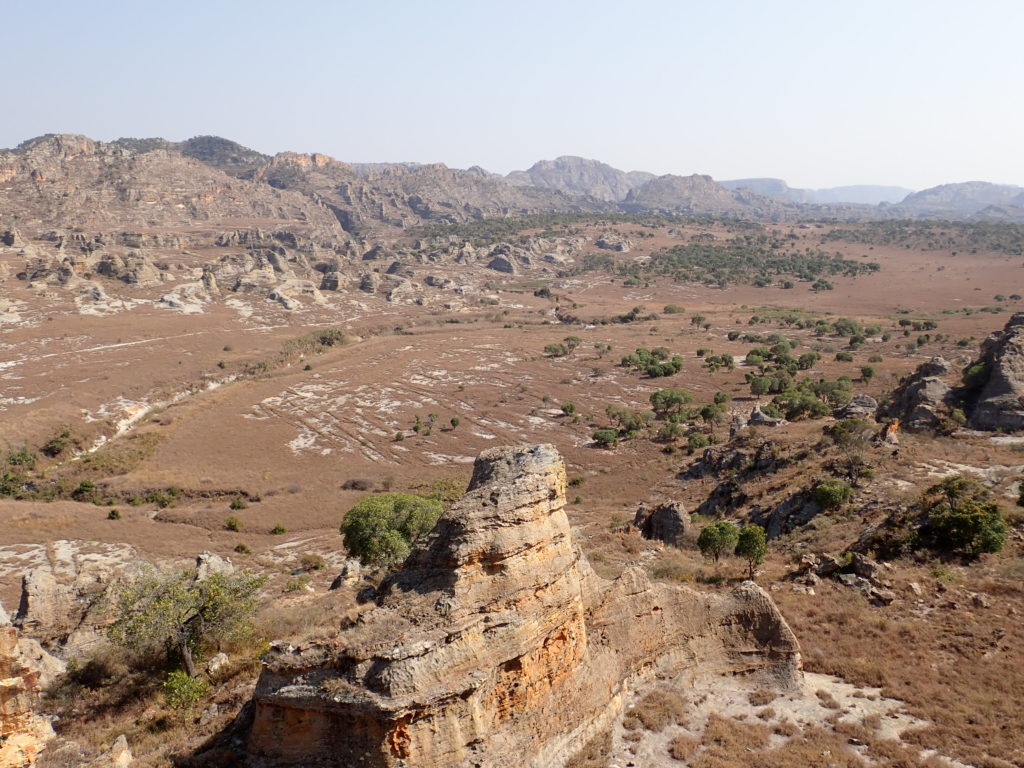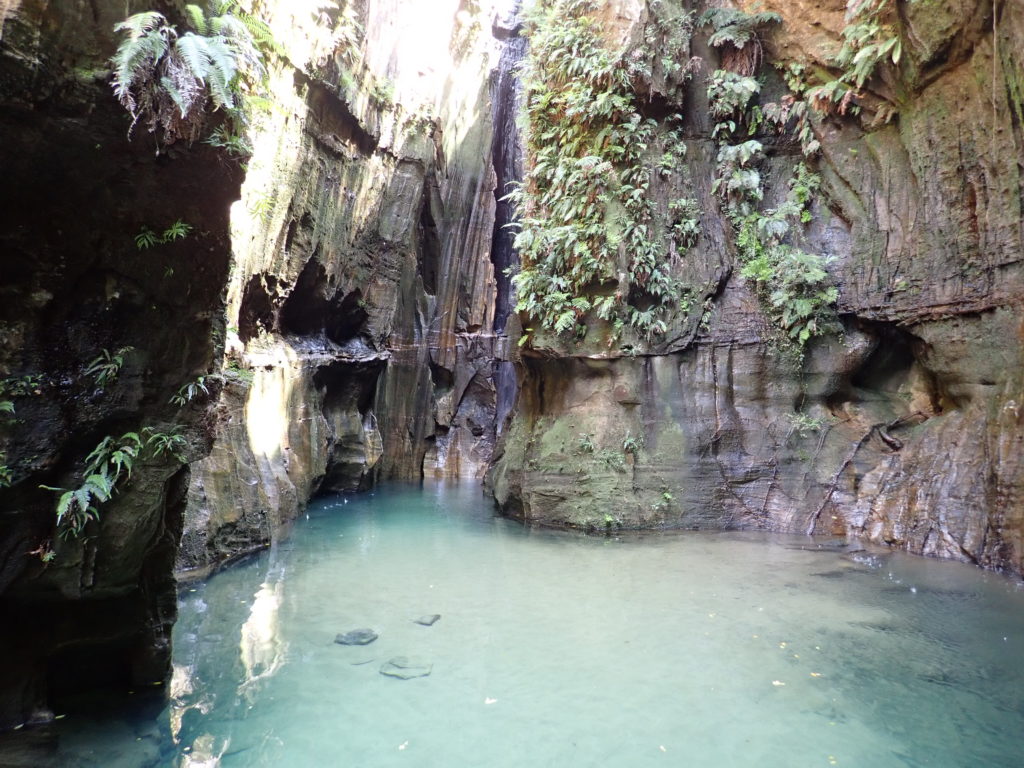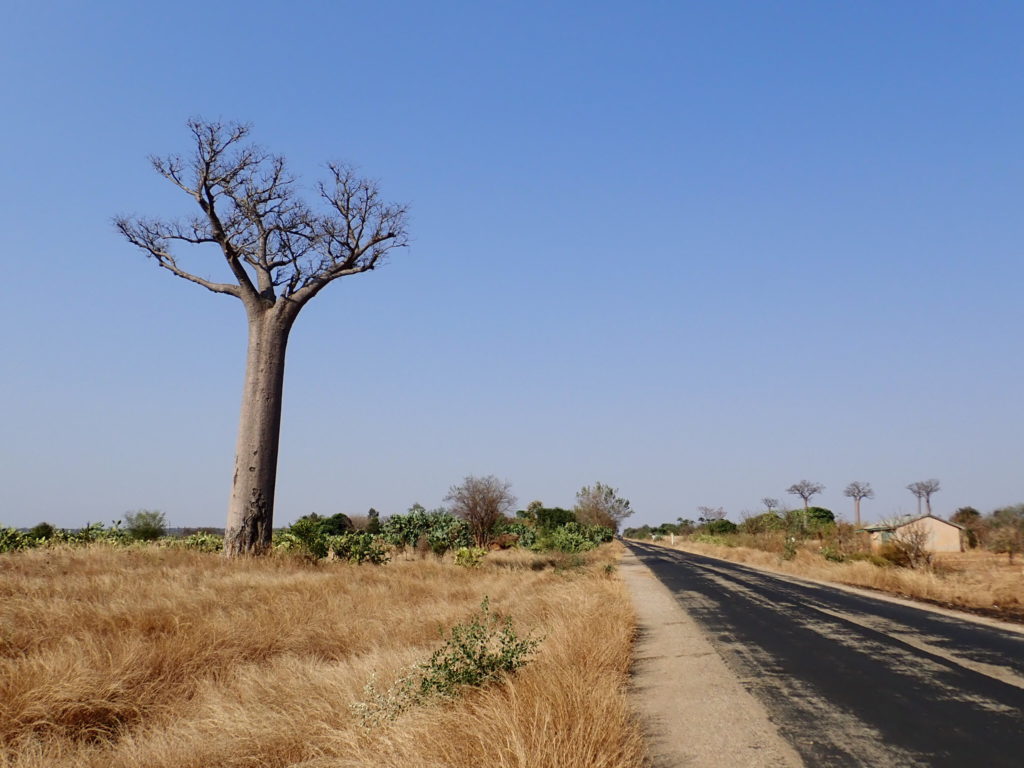Two-thirds along the RN7 road, at the crossroads with the RN25 towards the east coast, lies Fianarantsoa, a gateway city to the southeast. We were supposed to take the train here and follow the scenic railroad down to Manakara at the coast. However the FCE railway corporation had reduced its timetable for departure to only twice a week and our itinerary did not allow for a three-day waiting period. This was disappointing as the experience came highly recommended. Yet this a country that is difficult to travel efficiently and even more so on the fly and we had not expected to be able to follow our full itinerary. We changed our plans and this also meant dropping the boat ride along the Canal de Pangalanes, a canal that connects several lakes stretched along the east coast.
Instead we opted to immediately head for Ranomafana national park, a large area of mostly rainforest fifty kilometres from Fianarantsoa. Here we settled for the night.
Madagascar sunset is around 6.30pm and sunrise is at 6am. We had already changed our daily rhythm to get as much out of the day as possible, sleeping at 10pm and getting up 6.30am at the latest, to be able to take advantage of the early park opening hours and animal activity, many of which are nocturnal. upon entering the park the next day we booked the longest one-day trip possible, an eight-hour hike that takes visitors through bamboo forest, secondary forest and most notable primary forest where trees are taller and undergrowth much richer and more colourful. Most of the trails through the bamboo forest were relatively easy although our guide took us off the beaten track regularly to climb and claw our way to the best lemur spotting sites. We encountered red belly lemurs at first and then the black and white ruffled lemur, a much rarer find.
The trail through the secondary forest proved to be slightly more difficult to tread and once we reached the primary forest it turned into a series of long climbs, steep and slippery descents and many cobwebs. A very limited number of people apparently attempt this hike and our guide was rather short, leaving it up to us to clear the forest track of spiders and webs.
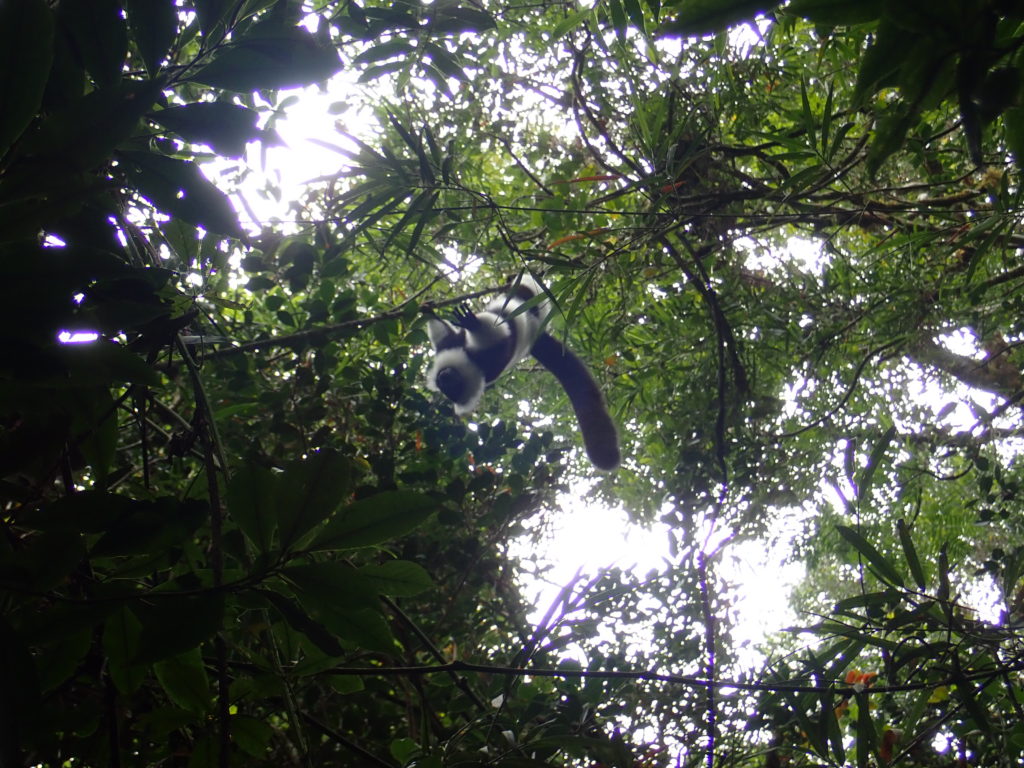
The walk through the primary forest was stunning in its beauty and it is very rewarding for those with a reasonable level of fitness. When you attempt this, make sure you bring enough water and some lunch as you’ll burn a lot of calories. This part of the park did not seem to be much richer in wildlife as the other areas although we did chance upon a ring-tailed mongoose that crossed our trail. This mongoose is active by day and relatively common in Ranomafana. Unfortunately it was gone in a split second before we could even think about getting our cameras out and I even missed it completely.

On our return to the bamboo forest we again spotted a number of lemurs which brought our total to five different species. Throughout our hike we also encountered various geckos, chameleons, frogs and one snake that our guide snatched from the undergrowth and offered us to hold by its tail. We skipped one hour of our hike to go back to the hotel, get some food and return for the night ‘walk’. This is a two-hour activity along the road outside the park where guides point out more animals, mainly frogs and chameleons that come out of hiding during the evening. The guides also crush a banana on the tree stem to lure the small nocturnal mouse lemur. It did indeed come out to lick the tree but got immediately photographed and flashed by 15 people which was probably a bit stressful for the little animal and we decided to leave it alone after that.
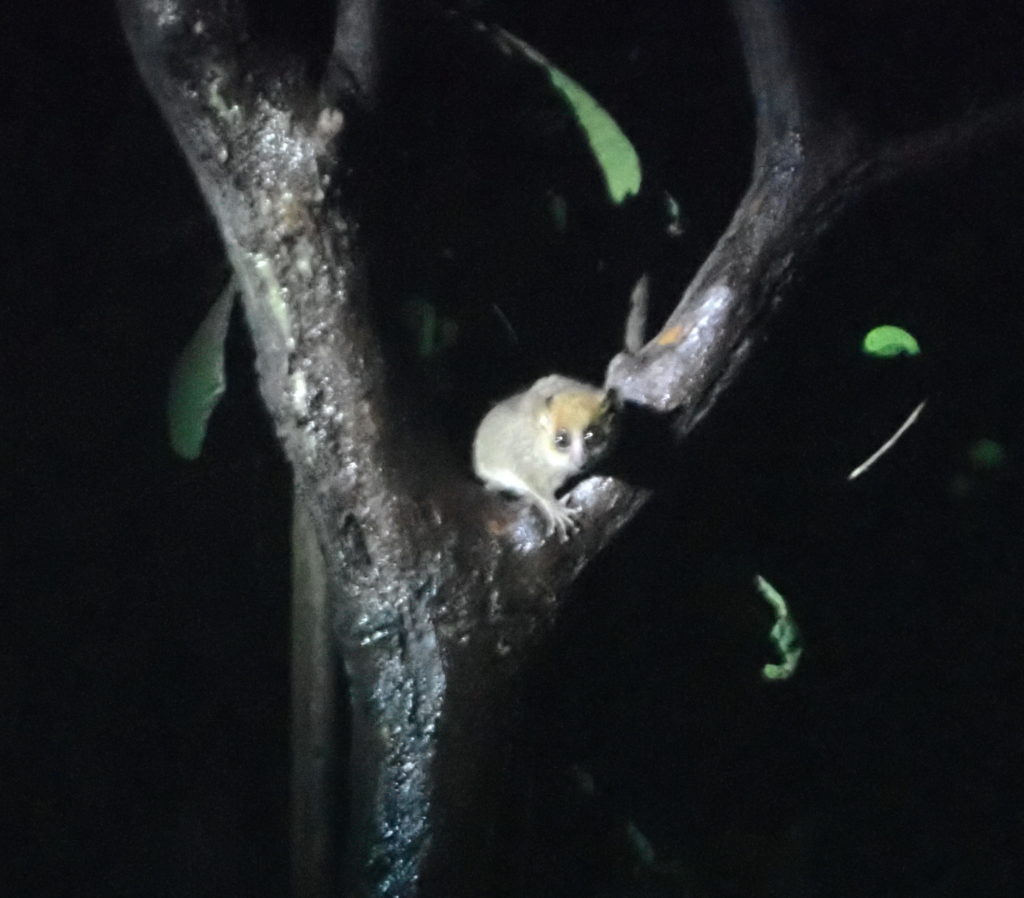
This Ranomafana frog just wanted to say hello.
